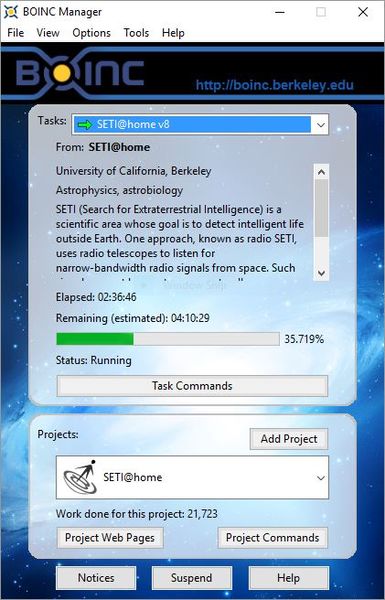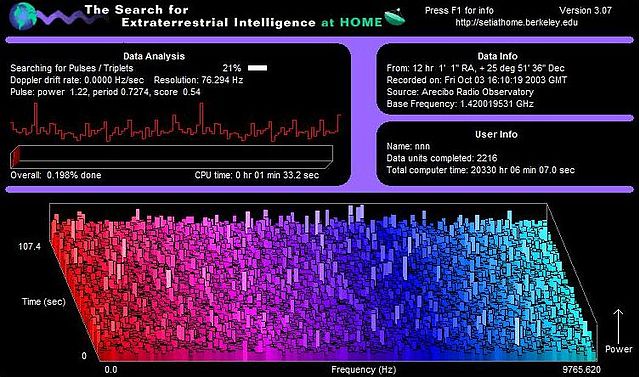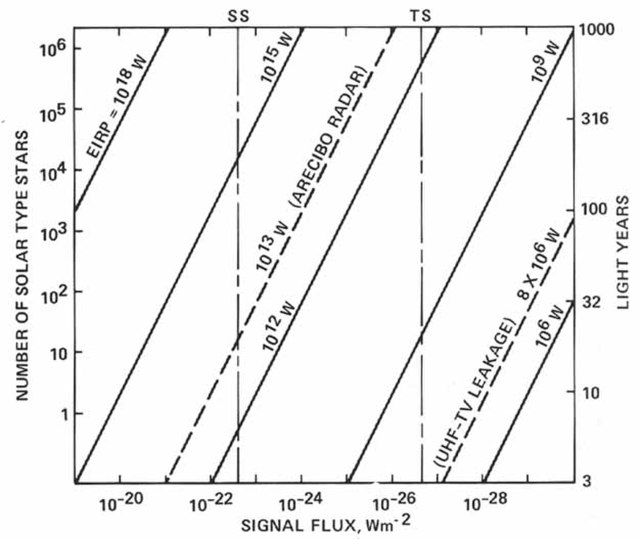SETI@home is a project of the Berkeley SETI Research Center to analyze radio signals with the aim of searching for signs of extraterrestrial intelligence. Until March 2020, it was run as an Internet-based public volunteer computing project that employed the BOINC software platform. It is hosted by the Space Sciences Laboratory at the University of California, Berkeley, and is one of many activities undertaken as part of the worldwide SETI effort.
The BOINC Manager working on the SETI@home project (v 7.6.22)
Screenshot of SETI@home Classic Screensaver (v3.07)
Search for extraterrestrial intelligence
The search for extraterrestrial intelligence (SETI) is a collective term for scientific searches for intelligent extraterrestrial life, for example, monitoring electromagnetic radiation for signs of transmissions from civilizations on other planets.
The Wow! Signal
Sensitivity vs range for SETI radio searches. The diagonal lines show transmitters of different effective powers. The x-axis is the sensitivity of the search. The y-axis on the right is the range in light-years, and on the left is the number of Sun-like stars within this range. The vertical line labeled SS is the typical sensitivity achieved by a full sky search, such as BETA above. The vertical line labeled TS is the typical sensitivity achieved by a targeted search such as Phoenix.
Arecibo Telescope in Puerto Rico with its 300 m (980 ft) dish was one of the world's largest filled-aperture (i.e. full dish) radio telescope and conducted some SETI searches.
Microwave window as seen by a ground based system. From NASA report SP-419: SETI – the Search for Extraterrestrial Intelligence






